Ted Norris and CUOS: Reaching new frontiers in ultrafast optical science
Comprised of electrical engineers, astrophysicists, physicists, materials scientists, biomedical engineers, and doctors, CUOS explore ultrafast laser applications.
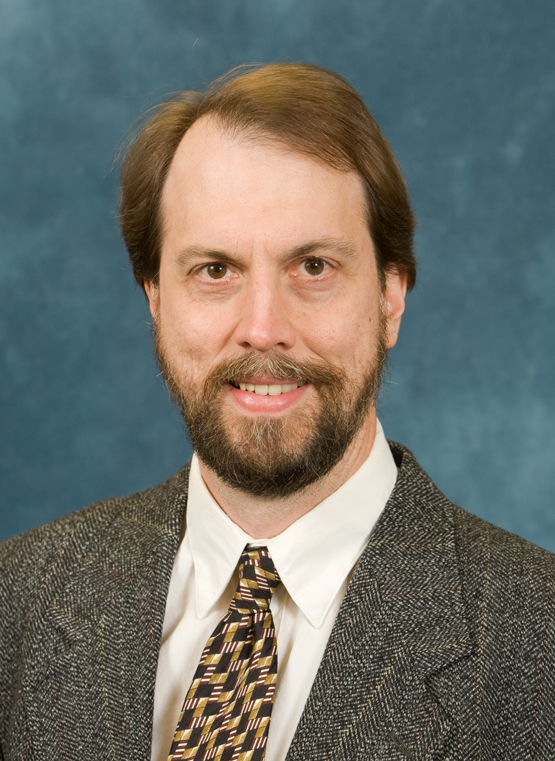
 Enlarge
Enlarge
The province of ultrafast optical science, explored in the Center for Ultrafast
Optical Science (CUOS), is the generation and application of extremely short pulses of light. How fast is ultrafast? Scientists at CUOS work in femtoseconds (10-15 seconds), and even attoseconds (10-18 seconds). Lasers that can produce such ultrashort pulses of light make it is possible to investigate and even control phenomena in materials with low intensity, as well as drive novel processes using extremely high peak power. Indeed, ultrafast lasers produce the shortest controlled bursts of energy and the highest peak intensity ever produced by mankind. Researchers at CUOS build these highly remarkable lasers, and are discovering important applications for them.
Comprised of electrical engineers, astrophysicists, physicists, materials scientists, biomedical engineers, and doctors, CUOS researchers explore ultrafast laser applications across the entire range of pulse energy. This includes low-energy laser applications such as biomedical optics and spectroscopy, medium-energy applications such as terahertz generation and micromachining, and studies of light-matter interactions at the highest achievable intensity that promise new treatments for cancer, breakthroughs in lithography, and new insights into fundamental science.
Leading this highly diverse group of interdisciplinary researchers affiliated with CUOS is Professor Ted Norris. Prof. Norris, formerly the Associate Director, took over as Director where his long-time mentor and internationally renowned researcher, Gérard Mourou, left off. Mourou is best known for inventing chirped pulse amplification (CPA), which enabled extremely high power ultrafast lasers. Prof. Norris worked with Prof. Mourou as a graduate student at the University of Rochester, and after completing a post-doc in France in 1990, was persuaded to join the new ultrafast laser laboratory being established at Michigan. Norris recalled the early days of CUOS as an experiment in how to do interdisciplinary research at a University. “It was a tremendous success,” said Norris, “with the highly successful spinoffs, Picometrix, Clark MXR, Translume, and Intralase. These companies have created an incipient optics industry right here in Ann Arbor.”
As director, Prof. Norris is ideally suited to bringing together the disparate groups of researchers that are affiliated with CUOS. For many years, he has straddled the fields of electrical engineering, physics, applied physics, chemistry, and medicine in his research. He has been Associate Director of the Applied Physics program since 2002, and is a member of the NSF FOCUS Physics Frontier Center. Norris was a recipient of the Ted Kennedy College of Engineering Team Award for his team’s contributions to pioneering work in quantum dot semiconductor optoelectronics. He is a Fellow of both the Optical Society of America and the American Physical Society, and maintains close ties with faculty of several different research fields, including the Medical School.
Lasers, Lasers, Lasers
Driving the early days of CUOS in the 1990’s was the development of ultrafast titanium-sapphire amplifiers, a new class of ultrafast laser combining high peak power with short pulses. Prof. Norris invented the ultrafast high-repetition-rate Ti:sapphire amplifier in the early 90s, and is amazed that the same basic technology is still state-of-the-art today. These lasers are found in over a thousand laboratories throughout the world in universities, national laboratories, and industry. “We’re waiting for Almantas to make all of that obsolete,” smiles Norris. “He will get there with his fiber lasers.”
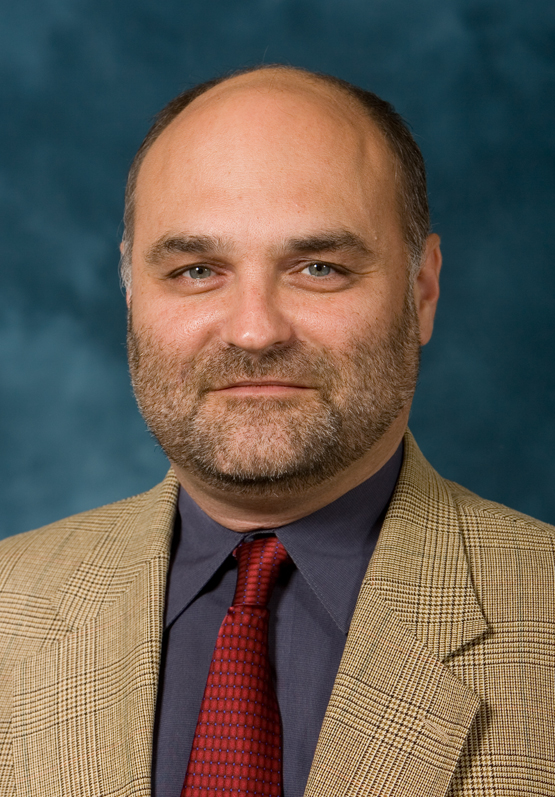
 Enlarge
Enlarge
While most high-power ultrafast lasers rely on “open-cavity” design, Prof. Almantas Galvanauskas has been defying conventional wisdom by pursuing high-power ultrafast laser pulse generation in optical fibers. After proving the viability of ultrashortpulse lasers using optical fibers, he received a $7M grant from the Army Research Office through the Joint Technology Office for High Energy Laser development to explore, among other things, high power operation of innovative fibers. He invented a new class of fiber called chirally coupled core (CCC) fiber. “The idea was so new that people were skeptical it could work,” said Galvanauskas. “It worked on the first shot.”
Prof. Galvanauskas has also been working to achieve high peak power pulses with fiber lasers, and over the past two years has been able to generate extreme ultraviolet (UV) light with this technique. UV light is considered to be key to next generation lithography for chip manufacturing, and if experiments with these new lasers continue to prove fruitful, they could have a significant impact on the world’s chip industry.
Finally, Prof. Galvanauskas is collaborating with Prof. Norris’ group and with Picometrix on a project that uses fiber lasers to generate high power teraherz
radiation. Teraherz radiation can be used to scan contents of packages and luggage at airports, and even individuals, at a distance. Prof. Galvanauskas enjoys pursuing completely new areas. “I want to try what is pioneering, which is very risky, but very rewarding if you succeed,” he says. “That’s why I’m at a university.”
HERCULES
CPA enabled the miniaturization of high power, high intensity lasers, so that a laser fitting on a table-top could achieve peak power of a petawatt (1015 W, or a million billion watts!). One such laser, called HERCULES (High-Energy Repetitive CUos LasEr System), was built at CUOS by a team led by research scientist Victor Yanovsky. HERCULES is a table-top size laser that set the world record for high intensity in a laser back in 2003, and has recently broken its own record. No other known laser system can achieve the focused laser intensity of HERCULES!
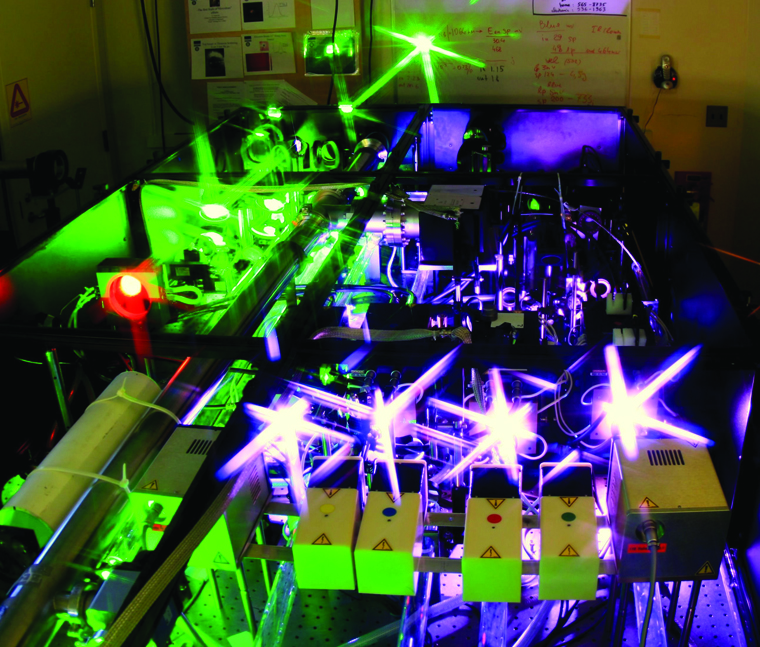
 Enlarge
Enlarge
Excited about the possibilities of this laser technology is Prof. Karl Krushelnick, professor of Nuclear Engineering and Radiological Sciences (NERS), EECS, and Associate Director for High Field Science at CUOS. Krushelnick emphasizes that
HERCULES presents remarkable opportunities for deepening our understanding of fundamental science, as well as for expanding practical applications in materials science, biology, and medicine.
HERCULES has a pulse length of approximately 30 femtoseconds, which enables its very high power. Focusing the resulting laser beam yields extraordinarily high intensities – seen nowhere else in the universe except perhaps during a supernova. “It’s a very unique condition,” explains Prof. Krushelnick, “so there is very interesting and important fundamental science that can be done in such experiments.”

 Enlarge
Enlarge
When focused on a material, such a high power laser will create a plasma with unique properties. Plasmas are ionized gases – meaning that they are so hot that the electrons actually separate from the rest of the atom. At present, scientists study the properties of fundamental particles by accelerating them in large accelerators, or they can use the radiation produced from the electron beams in synchrotron facilities, which are about the size of a football stadium and cost up to $1B. Prof. Krushelnick’s goal is to conduct the same type of research in a university setting. With HERCULES, he is already reporting good quality electron beams which can be accelerated using relativistic plasmas to energies approaching a GeV, which is comparable to the beams generated by a synchrotron – with an acceleration distance of only a few millimeters!
Cancer Research with Lasers and Optics
Krushelnick believes HERCULES’ capabilities can be used to treat cancer. By using the laser to generate high-energy protons, and directing a proton beam into the middle of a tumor, it may be possible to destroy the cancerous cells with little collateral damage to the surrounding tissue. A handful of facilities using conventional accelerators are currently available for this type of treatment, but they are large and extremely expensive. By reducing the size of the laser to that of a tabletop, or the size of HERCULES, this treatment will be more readily available to all who need it.
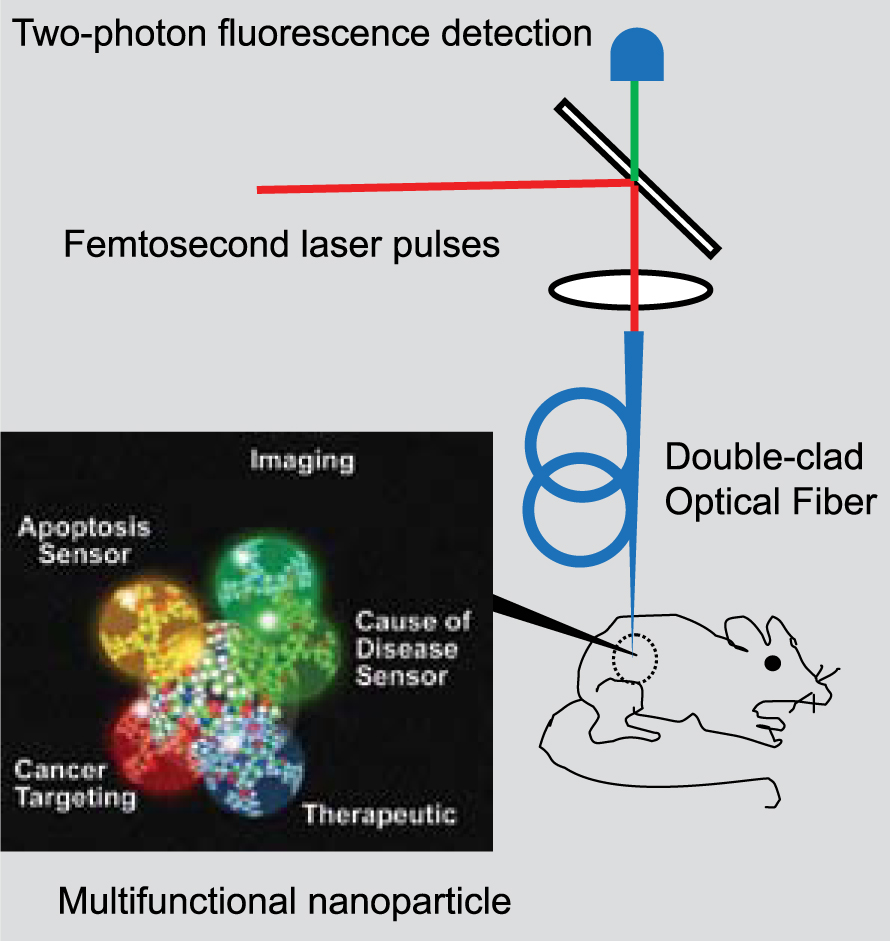
 Enlarge
Enlarge
At the same time, Prof. Norris has been working on a unique method of cancer treatment with researchers affiliated with the Michigan Nanotechnology Institute for Medicine and Biological Sciences (M-NIMBS). In this research, special molecules are attached to nanoparticles in order to guide them to a tumor in the body. Chemotherapeutic molecules that will then kill the cancer cells are attached to the nanoparticles. One of the challenges of this technology has been to measure how well the nanoparticles target the actual tumor. To accomplish this, a fluorescent molecule may be attached to the nanoparticles, and an ultrafast laser used to measure the fluorescence.
Norris’ group at CUOS developed a novel optical fiber, called a dual-clad fiber, which can be inserted deep into tissue to measure very accurately the concentration of nanoparticles in real time. “We’re able to do in vivo measurements of flourescence in live mice, and follow the dynamics of these nanoparticles in real time as they circulate. This has been key to proving that the nanoparticles indeed home in to tumors, and has been one of our big successes,” said Norris. This technology has been patented and licensed, and may prove to have major applications in endoscopy as well; high-resolution microscopy can be performed in an endoscope using this fiber technology.
In another project having important applications to cancer research, Norris’ group has developed an ultrafast laser fluorescence system called twophoton excitation to observe circulating cells in real time in the body. When a tumor metastasizes, the primary tumor sheds cells that travel to other parts of the body. Among those that are shed, the cells responsible for metastasis are suspected to be stem cells, and the concentration of these stem cells in the blood can be correlated to a patient’s prognosis. Real-time monitoring of cancer cells in the blood stream will be critical to advancing studies of metastasis as well as targeted therapies.
Student Connection
This type of research requires a close cooperation between the fields of engineering and medicine, which is easily facilitated at U-M through the close proximity of the College of Engineering and the Medical School. One of the students working on flow cytometry was Eric Tkacyk, who, as part of the Medical Scientist Training Program (MSTP), is combining a PhD in electrical engineering with an MD in medicine. Through this program, Eric said he hopes to “bring a unique clinical perspective to the development of advanced diagnostics and treatments for the betterment of human health.”
Tkacyk described Prof. Norris as “a truly outstanding advisor,” and added, “Ted gives the academic freedom to deepen all aspects of the graduate education. He also has a unique talent to convey a deep understanding of the physics driving our novel technologies. Ted really cares about his students, that’s a priority for him.”
CUOS and Ultrafast Optoelectronics
In the field of ultrafast optoelectronics, major breakthroughs have come from Prof. Norris’ collaboration with Prof. Pallab Bhattacharya and others over the past decade. One of their major accomplishments was to develop a comprehensive picture of the dynamics of electrons in quantum dot structures, leading to the development of highspeed quantum dot lasers and quantum dot infrared photodetectors.
Most recently, Prof. Norris and his students have been collaborating with Prof. Federico Capasso at Harvard University, He and Capasso have had significant success this past year using ultrafast lasers to understand the unique way electrons move through Quantum Cascade Laser (QCL) devices. These experiments, the first mid-infrared ultrafast measurements of operating cascade lasers, have illuminated the key electronic transport processes responsible for QCL operation.
CUOS and Micromachining
Building on the discovery of ultraprecise femtosecond laser micromachining by Prof. Mourou in the 1990’s, there is a large and vital activity at CUOS pursuing real-world applications for femtosecond lasers in the area of materials processing and micromachining. Prof. Tresa Pollack, Department of Materials Science and Engineering (MSE), is using short pulse lasers both at Michigan and at national laboratories to attempt to detect the microscopic origins of cracks in materials that can lead to failures, without damaging the material in the process. This could have tremendous ramifications for the nondestructive testing of airplane turbine blades.
Prof. Steven Yalisove, also in MSE, is collaborating with Pollack, Galvanauskas, and research scientist John Nees on a project known as Non-destructive Laser Induced Breakdown Spectroscopy, which uses lasers to break down extremely small amounts of material (nanograms) which can then be studied optically.
In yet another of many related projects, femtosecond pulse lasers are used by Biomedical Engineering professor Alan Hunt and his group at CUOS to address a variety of biological questions and to develop tools to further biomedical research. A significant recent breakthrough has been in the area of nanoscale machined holes, capable of being produced without debris. His group has been able to break the diffraction limit, and machine to tenths of nanometers in scale. This work is leading to the development of sub-cellular surgery! Recently his group has also been concentrating on using ultrafast micromachining to fabricate three-dimensional micro-fluidic devices, with planned applications in medical diagnostics and environmental testing.
The Future of CUOS is Bright
Prof. Norris is excited at the tremendous opportunities on the horizon for research at CUOS. Two of the most important frontiers in ultrafast laser development are in the areas of high laser intensity, and high laser average power with femtosecond pulses. CUOS is the leading U.S. laboratory in both of these areas.
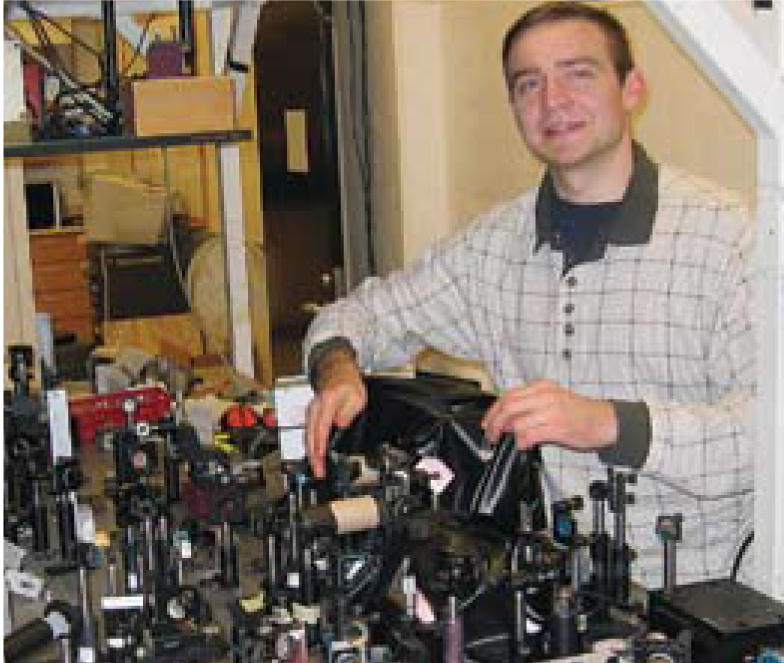
 Enlarge
Enlarge
HERCULES owns the world record for focused intensity, and is being upgraded by Dr. Yanofsky’s team to the petawatt power level. Prof. Krushelnick is utilizing the unique properties of HERCULES to perform plasma physics experiments at unprecedented laser intensity, and to develop powerful new laser accelerators. A new assistant professor in NERS, Alec Thomas, is joining CUOS this Fall semester to further build the laser-plasma and accelerator programs. New experiments are coming on line to demonstrate ultrafast coherent x-ray generation. This has been a long-standing goal of the field, and will enable such new fields as dynamical structure studies of biologically important proteins.
Prof. Galvanauskas and his group are inventing new optical fibers which will enable unprecedented high average power from compact ultrafast fiber lasers. “The field of very high average power lasers is not just an engineering frontier,” states Prof. Norris. “It’s the real key toward bringing to fruition many of the real-world applications that we foresee for ultrafast pulses.”
“At CUOS, there is engineering to do science, and engineering for the marketplace,” explained Norris. “Much ultrafast research advances science, particularly in optoelectronics, chemistry, and biomedical science.”
CUOS research has led to a number of successful spin-offs and commercialized technology. Prof. Galvanauskas recently founded Arbor Photonics to commercialize new fiber technology. Also, the development of ultrafast-laser-based biomedical instrumentation is resulting in numerous patents and licensing arrangements; for example the dual-clad fiber probe has attracted the attention of companies doing endoscopic microscopy.
“The best thing about Michigan is that whatever you want to do, you can do here.”
Michigan provides the ideal environment for Prof. Norris and his colleagues in CUOS to continue to pursue new directions in science. “The best thing about Michigan,” states Norris, “is that whatever you want to do, you can do here. You can explore crazy new ideas, and be relatively fearless about going into new fields. If you need to find someone outside your area of expertise – and we always do – you can find someone here to work with.”
 MENU
MENU 
